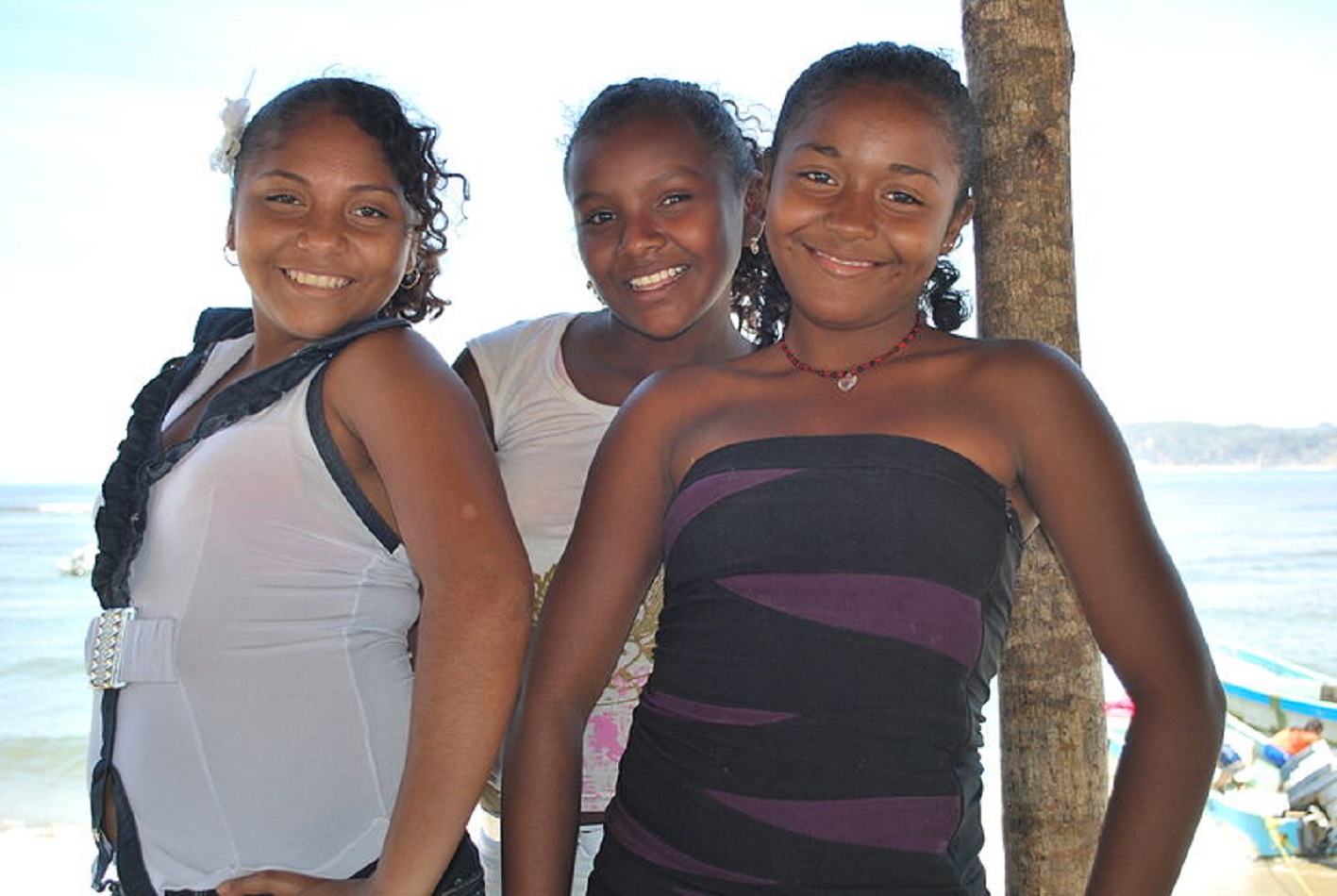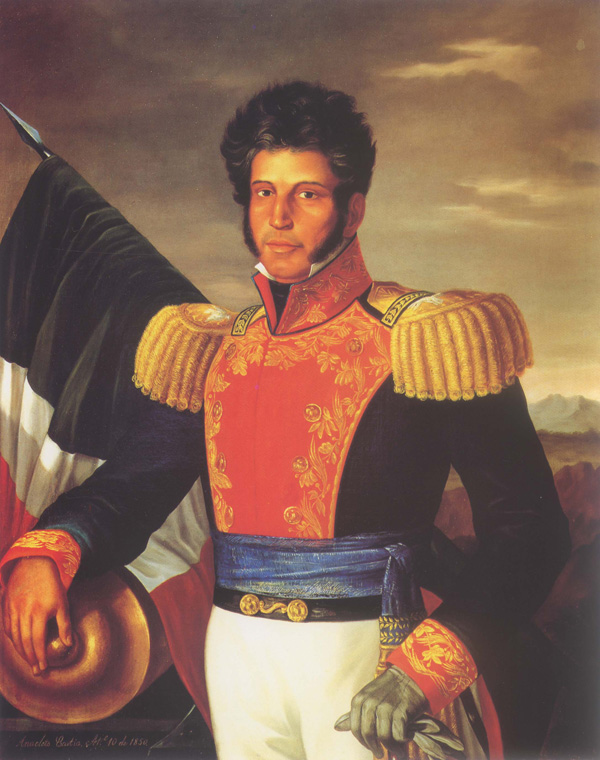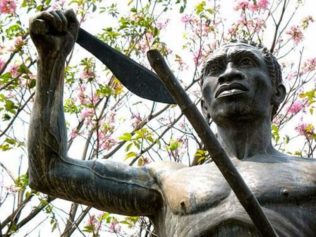
The Mexican government has established a national institute to guarantee the rights of indigenous people, including the nation’s 1.4 million Afro-Mexicans (photo: Wikimedia Commons).
The Mexican government has created a national institute to guarantee the rights of indigenous people, including the nation’s 1.4 million Afro-Mexicans. This move by the government — in contrast to a much different situation in Brazil with newly elected President Bolsonaro and his plan to disempower indigenous and Black people and remove them from their lands — reflects a change in a society where the poor and Black and indigenous people have been sidelined.
Rendered invisible in a country that regards itself a nation of mestizos or mixed people, Afro-Mexicans and indigenous people are now receiving support and protection from the Mexican government.
The Mexican Senate enacted a law creating a National Institute of Indigenous Peoples — Instituto Nacional de los Pueblos Indígenas — that recognizes indigenous groups’ right to self-determination and autonomy. This includes the right of these groups to be consulted by the government on matters impacting them, and more important, includes Afro-Mexicans among these indigenous populations. With this new law, the Senate also eliminated the National Commission for the Development of Indigenous Peoples. The new institute reflects respect and autonomy for indigenous groups, and strengthening of their cultures and identities, rather than a mere focus on inequality and social exclusion as had previously taken place. Indigenous people in Mexico, including Mexicans of African descent, experience poverty, discrimination and a lack of access to education. Black Mexicans face racial harassment and are stopped by police and accused of being undocumented Cuban or Central American immigrants. Police in Mexico City forced one man, Afro-Mexican singer-songwriter Chogo el Bandeno to sing the Mexican national anthem three times and name the governors of five states. In other cases, two Black women with Mexican ID were deported to Haiti and Honduras on the belief there are no Black people in Mexico. Although they returned to the country of their birth, the women received no apology and no reparations for what they endured.
“So far the black communities have endured discrimination and they have stuck to legal avenues, which they have now exhausted,” said Humberto Hebert Silva Silva, head of the Bureau for Afro-Mexican Affairs in Oaxaca. “When we go and ask [for recognition as a minority], they come up with excuses, or say that we don’t have an indigenous mother tongue. Language is the real criterion,” he told BBC News. “We are being discriminated against.”
Known as Mexico’s “third root,” the often hidden Black people of Mexico are concentrated in the southwestern states of Oxaca and Guerrero, known as the Costa Chica on the southwest Pacific coast of the country, and Veracruz along the Gulf of Mexico. Around 200,000 African people were kidnapped and forced to come to Mexico via the Middle Passage, and by the early 17th century, Mexico had the largest African population in the Americas, and during the period of colonization it had more Africans than Europeans through 1810.

A statue of Gaspar Yanga, leader of uprising of enslaved Africans in Veracruz, Mexico (photo: Wikimedia Commons).

Vicente Guerrero, Afro-Mexican and second president of Mexico (Photo: Wikimedia Commons).
“The story of the black population has been ignored and erased from history,” Israel Reyes, an Afro-Mexican teacher told BBC News, noting the importance of Afro-Mexicans being recognized throughout the nation. Many Black leaders were instrumental in the Mexico’s independence from Spain, such as Vicente Guerrero, who led armies in the war of independence and abolished slavery when he became the nation’s second president. As blogger Shanna Collins noted, Afro-Mexicans have been regarded as undesirable and “dismissed as culturally irrelevant,” and some have attempted to pass.
The national identity of mestizaje, which refers to the mixing of Spanish and indigenous Native American people, negates the African influence in Mexico, from the culture and food to the African diasporic song “La Bamba,” which was sung by enslaved Africans in Veracruz, Mexico, who originated from the Bamba or Mbamba people in Angola and Congo. As a result of their harsh mistreatment by the Spanish colonizers, the Africans staged an uprising known as the Bambarria and joined with indigenous people. The jarocho music style of “La Bamba” is part of the African legacy of Mexico, as is Danza de los Diablos — the Dance of the Devils, performed in devil masks during the Day of the Dead in late October and early November — and the African musical instruments including the bote— a drum — and quijada — a percussion instrument made from the jawbone of a donkey. Mexicans of African heritage maintain the traditions and customs the ancestors brought from the African continent. And the town of Yanga in Veracruz, known as the “first free slave town in the Americas,” is named for Gaspar Yanga, a man from Gabon who led a revolt of enslaved Africans in 1570.
In 2015, Mexico recognized 1.4 million Mexicans of African descent as a part of its national census for the first time, representing a major step forward for the recognition of Black people in Latin America.
“People looked at me and asked if I was Brazilian, Cuban, Colombian, things other than Mexican — because in Mexico, it’s difficult for people to recognize that there are Afro-descendants,” Dora Careaga-Coleman, a professor at the University of New Mexico who is from an Afro-Mexican community in the Mexican state of Veracruz, told NPR.
The heightened visibility of Afro-Mexicans is evident in the film “La Negrada,” the first movie drama about Afro-Mexican people. “La Negrada” was filmed in the Costa Chica of Oaxaca, and features a cast of non-professional actors. Meanwhile, the film “Invisible Roots: Afro-Mexicans In Southern California” focuses on Black Mexicans in the U.S. There are approximately 25,000 Afro-Latinos in Los Angeles County.
“I envision, on the positive side, a lot of young men and young women who are feeling comfortable with who they are. And definitely there is some sense of pride in seeing somebody you actually look like making it big, making a movie, winning an Oscar, being president of a country, a senator,” Careaga-Coleman added. “So, on the one hand, the result is that people globally are recognizing with pride and dignity who they are and what they can achieve.” Acknowledging the presence of Afro-Mexicans is a step towards empowerment and self-determination for Black people, claiming their identity, and receiving the resources and support they need from the government.


